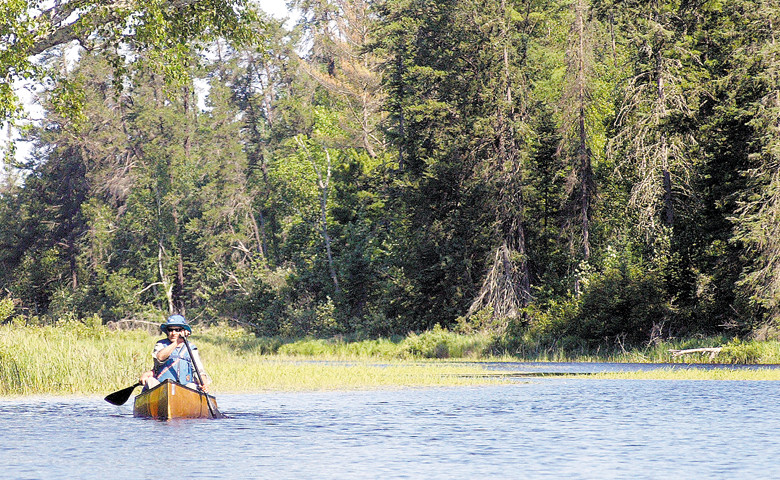Support the Timberjay by making a donation.
USFS agrees to assess need for recreational services in BW
Study part of lawsuit settlement; major changes seen as unlikely
SUPERIOR NATIONAL FOREST— The U.S. Forest Service will conduct a needs assessment of commercial recreational services within the Boundary Water Canoe Area Wilderness.
The federal agency agreed …
This item is available in full to subscribers.
Attention subscribers
To continue reading, you will need to either log in to your subscriber account, or purchase a new subscription.
If you are a current print subscriber, you can set up a free website account and connect your subscription to it by clicking here.
If you are a digital subscriber with an active, online-only subscription then you already have an account here. Just reset your password if you've not yet logged in to your account on this new site.
Otherwise, click here to view your options for subscribing.
Please log in to continue |
USFS agrees to assess need for recreational services in BW
Study part of lawsuit settlement; major changes seen as unlikely
SUPERIOR NATIONAL FOREST— The U.S. Forest Service will conduct a needs assessment of commercial recreational services within the Boundary Water Canoe Area Wilderness.
The federal agency agreed to conduct the assessment as part of the settlement of a lawsuit with Wilderness Watch over motorized towboat use in the 1.1 million-acre wilderness area. The settlement requires the Forest Service to complete the assessment within 30 months, but its findings would not obligate the agency to change its regulations or management within the wilderness regarding commercial uses, according to spokesperson Kris Reichenbach.
While commercial activities are generally prohibited in wilderness areas, federal law does provide an exemption for commercial operations that offer services to recreational users. In the BWCAW, the Forest Service has traditionally allowed services such as towboats, outfitters, wilderness guides, and dogsledders to serve customers in the wilderness. In conducting the assessment, Reichenbach said the Forest Service will consider whether offered services are appropriate in a wilderness setting, whether they are necessary, and whether they are consistent with wilderness regulations.
Some media reports have suggested the assessment is an effort by the Forest Service and Wilderness Watch to shut down a wide range of activities in the wilderness. But Kevin Proescholdt of Wilderness Watch, suggested that amounts to “hyperventilating.” “The settlement agreement is limited to “recreational commercial services,” so it’s a bit broader than just towboats but narrower than an anything-under-the-sun description. The bulk of the assessment will focus on towboats,” said Proescholdt.
“By definition, we’re looking at commercial recreational services,” said Reichenbach, although she acknowledged that the full scope of the analysis is not yet known. She said a specialized Forest Service “enterprise team” will draft the report, with help from resource specialists on the Superior. Reichenbach said the people involved will be experienced in conducting such assessments. “It’s not unusual within the Forest Service to do something like this,” said Reichenbach, although she acknowledged it’s the first time such an analysis has been done for the Superior National Forest.
While the Forest Service has grappled with questions about what constitutes commercial activity within the wilderness for years, Kawishiwi District Ranger Gus Smith said he does not expect many of those questions to be a part of the needs assessment. Issues like netting of bait ciscoes, commercial photography, or commercial trapping, in the wilderness are three such examples, notes Smith. “I don’t think they’ll be any part of this assessment,” he added. “Those are side issues.”
And Smith offered his own view of the need for various recreational services, such as outfitting, noting that far viewer people would be able to experience the Boundary Waters without such services. “Do we need commercial services in the wilderness? I think anyone could easily answer that question. I don’t know through what lens you would have to view it to suggest that we don’t. Outfitters and guides are critical services and I don’t think anybody envisions limiting that.”
Even so, Smith said he recognizes that the assessment could be fueling some anxiety in places like Ely or Grand Marais, where large numbers of people work in the outfitting and guiding sector. “And now we’re studying to what extent their services should be there,” he said.
Reichenbach said the process will include a public comment period and periodic updates on the progress of the assessment. Reichenbach said more information will be available after the assessment team arrives on the forest.






